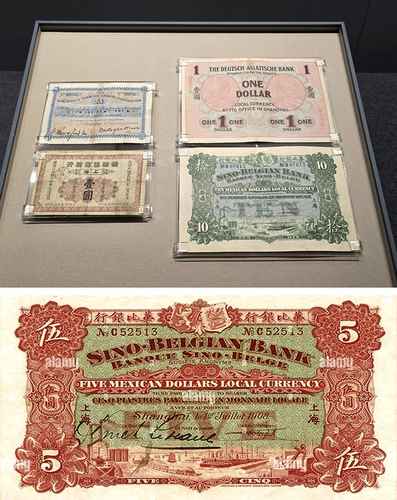Shanghai. The exploitation of Mexican silver during the viceroyalty extended to such a degree that after the real of eight – the currency that the Spanish colony moved as common use internationally – the mexican dollar
It found part of its niche in the coastal cities of China in the last half of the 19th century and the beginning of the 20th century.
Backed by the metal extracted from Mexican mines, which international and Chinese banks hoarded for decades as a reserve, the paper currency denominated mexican dollar
It spread through Chinese ports where international trade was the main activity and circulated at the same time as the Shanghai tael; of the customs gold unit, issued by the Central Bank of China; of the yuan and the Hong Kong dollar.
In what was a house in the French concession of Shanghai, where the first National Congress of the Communist Party of China was held, which now serves as a memorialthese banknotes are exhibited, a sample of the atmosphere that existed in the port, not only as the commercial node with the West, but as the industrial center that allowed the political movement to rise with the Soviet Union and the Communist International in this city.
Due to the confidence in the purity of the metal in which they were cast, the mexican dollars
They became one of the main current currencies in several coastal cities of China once the eight reales that the Spanish empire internationalized with the silver exploited from the colonies, especially from Mexico and Potosí, in Bolivia, began to become scarce.
In an article published in 1904 in The Quarterly Journal of Economicstitled The end of the Mexican dollar
politician and economist Abram Piatt Andrew reports that Mexican dollars are in circulation in the ports of Canton, Swatow, Amoy, Foochow, Ningpo and Shanghai
.
Because the Chinese government allowed some foreign banking corporations to serve as ticket issuing authorities
to date you can find auctions of mexican dollars
of the Russian-Chinese Bank, the Hong Kong and Shanghai Banking Corporation, the Sino-Belgian Bank, the Bank of India, Australia and China and the Industrial Bank of China.
First as physical silver and then as paper money whose backing was the metal extracted from Mexico, the mexican dollar
It circulated alongside other local Chinese currencies. Its common use, beyond the payment of imports, became such that rent bills were shown in forums where the rental of real estate was negotiated.
The building/apartment 18. The rent for the month of June. The amount is 46 dollars (Mexican)
shows one of those forums dedicated to numismatics. Another records a theft in 1914, reported in the Police Magistrates’ Notebooks, where an employee of a Japanese company reports the theft of two 10-dollar bills from the Chartered Bank, four 10-dollar bills from the Japanese Bank, and 20 dollars. Mexicans in silver.
According to research by Alejandra Irigoin, from the London School of Economics; Atsushi Kobayashi of Kyoto University and David Chilosi of King’s College, after the 1840s, political stability and new management of mints in Mexico allowed coinage based on Mexican silver to become more consistent and stable.
During the 1850s, new Mexican dollars gained acceptance as a new monetary standard in China and became a convenient means of settling Britain’s still large trade deficit with the Middle Kingdom.
thus imports of the Mexican currency increased first in Canton and Hong Kong, where the currency was on par with the Spanish dollar since 1853; and later in Shanghai, once the currency of the former empire was more difficult to obtain.
Irigoin, Kobayashi and Chilosi detail that in Shanghai it took longer for the full entry of the mexican dollar
because between 1856 and 1857 the tael entered as a unit of account that also finally linked the new Mexican dollar to the value of the Spanish currency.
Therefore, Mexican dollars also began to be counted by tael and became the new standard with which silver in China was officially received at Customs and used to set the price of exports and imports.
they explain.
However, once the “Mexican dollar” entered Chinese coastal cities, it spread for decades; even the entry of the standardized yuan was pegged to the old Mexican dollar.
The lack of uniformity in the Chinese dollar caused the Mexican dollar to continue circulating in 1924
Irigoin, Kobayashi and Chilosi themselves report. Even his source for this information, a book by Edward Kann, published in Shanghai in 1926, was quoted in mexican dollars
.
